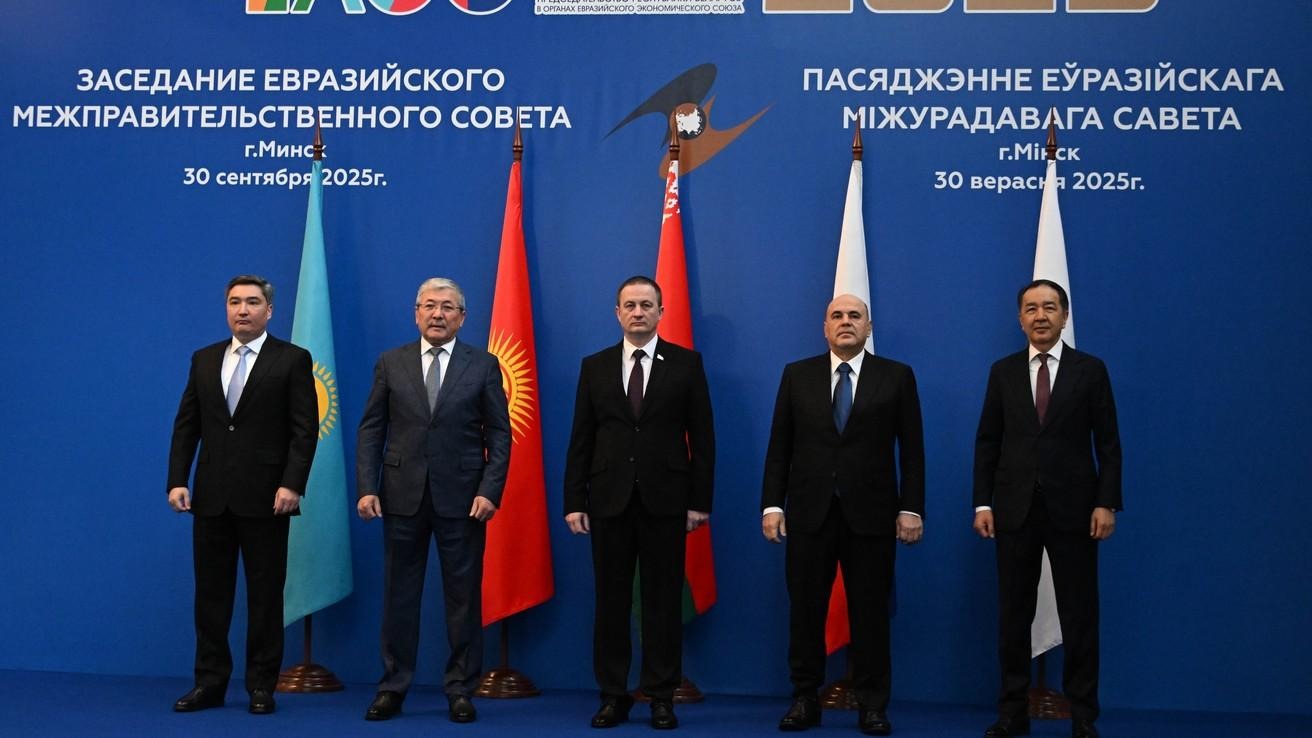
Russia’s ‘Peacekeeping’ Operation in Karabakh: Foundation of a Russian Protectorate (Part One)
Russia’s ‘Peacekeeping’ Operation in Karabakh: Foundation of a Russian Protectorate (Part One)
Following its victorious 44-day war (September 27–November 9), Azerbaijan controls approximately one third of the territory of its Upper (“Nagorno”) Karabakh region. The larger part remains under Armenia’s control via the unrecognized republic of Karabakh, although the territory is universally recognized as being a part of Azerbaijan. The Kremlin-brokered ceasefire of November 9 and its “peacekeeping” intervention have prevented Azerbaijan from regaining this larger part of Upper Karabakh with its administrative center, Stepanakert (Khankendi in Azerbaijani). The ceasefire stopped the Azerbaijani forces’ seemingly irresistible advance; and the swift insertion of Russian “peacekeeping“ troops has effectively sealed Armenia’s continuing hold onto a rump–Upper Karabakh. Strategically, however, thanks to its intervention, Russia has practically become a suzerain power in this enclave and seems to be laying the foundation for a Russian protectorate.
The November 9 armistice agreement makes no reference to Upper Karabakh’s legal or political status. Azerbaijan’s legal title to sovereignty is not in dispute, but is omitted. De facto, meanwhile, the armistice agreement complicates the situation even further than it already was. Upper Karabakh—hitherto a territorial unit—is now divided between an Azerbaijani-administered part, free from Russian troops (excepting the Lachin corridor—see below) and a larger part under an unrecognized local Armenian administration. The latter is equipped with state structures (including an “army”) but is practically governed from Yerevan; and it is now protected by Russian troops with a Russian civil-affairs presence on the ground (see EDM, November 12, 13).
Without making legal arrangements, Russia has become the security guarantor of this Armenian-inhabited territory of Azerbaijan against reincorporation by the same Azerbaijan. The case is analogous with those of Abkhazia, South Ossetia and Transnistria, which are protected by Russian troops vis-à-vis Georgia and Moldova, respectively. Akin to those cases, Russian “peacekeeping” troops in Upper Karabakh patrol the demarcation line between the enclave and the rest of Azerbaijan (see EDM, November 12, 13).
Unlike those other cases (or that of Ukraine’s Donbas), however, Russia has not dictated this armistice agreement. Rather, it has received Azerbaijan’s consent to the “peacekeeping” operation after serious negotiation and reciprocal give-and-take in the war’s final stage. Azerbaijan’s forces had, at that stage, regained four Armenian-occupied districts adjacent to Karabakh, in Azerbaijan’s interior. Azerbaijani President Ilham Aliyev consented to Russia’s “peacekeeping” operation in Upper Karabakh in return for Russian President Vladimir Putin compelling Yerevan to yield three additional Armenian-occupied districts in inner Azerbaijan (Aghdam, Kelbajar, Lachin) back to Baku without further fighting. President Aliyev recounted the essence of this quid pro quo in several post-armistice addresses to the nation (Azertag, November 20, 25, December 1).
The November 9 armistice agreement (Kremlin.ru, November 10) declares a full ceasefire between Azerbaijan and Armenia as “the Sides” (Upper Karabakh’s authorities being unrecognized). It stipulates the stationing of Russian “peacekeeping” troops in the Armenian-controlled part of Karabakh as well as in the Azerbaijani-controlled Lachin corridor (the 20-kilometer-long, 5-kilometer-wide link between Armenia and the Armenian-controlled Karabakh). Thus, the Russian “peacekeepers’ ” areas of responsibility are situated entirely on Azerbaijan’s internationally recognized (also by Russia) sovereign territory.
The Kremlin seems intent on a permanent military presence in Upper Karabakh. The armistice (clause 4) sets the “peacekeeping” mission’s duration at five years initially, to be prolonged automatically at five-year intervals, unless one of “the Sides” (Azerbaijan or Armenia) “declares its intention to cease implementing this clause” with six months’ advance notice. This wording does not provide a basis for Azerbaijan to demand outright the withdrawal of Russian troops in the future. It simply allows one side to make a unilateral statement. Nor does this wording obligate Russia to withdraw its troops, were Azerbaijan unilaterally to “cease implementing.” Moscow could well, in that case, respond by calling for negotiations and procrastinate with impunity (as it has in all the analogous cases—see above). Given that Russian troops are stationed exclusively on Azerbaijani legally recognized territory, Armenia’s inclusion in the clause about the operation’s lifetime is unwarranted and a potential source of Russian mischief.
Russia’s troop contingent is set at 1,960 motorized-rifle troops with light weapons, 90 armored personnel carriers, and 380 motor vehicles (no mention of helicopters) by the armistice agreement. Moscow, however, is augmenting its military and quasi-military presence in Upper Karabakh beyond the armistice agreement’s limitations. Taking charge of humanitarian relief and post-conflict reconstruction in this territory, the Russian government is deploying the personnel of its militarized departments responsible for civilian affairs to Upper Karabakh.
On November 13, President Putin instituted, by decree, an Interdepartmental Center for Humanitarian Response of the Russian government in Upper Karabakh. The Center draws its personnel for the most part from Russia’s Ministry for Emergency Situations, a fully militarized institution, formerly headed by Russia’s current Defense Minister Sergei Shoigu. The Ministry of Defense is, indeed, in charge of the Center’s “organizational matters,” according to Putin’s decree; while Russia’s Federal Security Service (FSB) also contributes personnel to the Center, as do civilian departments (Kremlin.ru, November 13).
Russia’s Humanitarian Response Center is instructed to work closely with the Russian “peacekeeping” troops. The Center has set up a “camp for long-term basing of Russia’s Emergency Situations Ministry’s personnel” outside Stepanakert. It is receiving supplies and additional personnel from Russia, including a new unit of more than 100 de-mining troops from Russia’s defense ministry (TASS, November 22, 23, 24, December 6). Supplies and reinforcements are delivered from Russia to the Yerevan airport and onward, overland, across Azerbaijani territory, to Karabakh. To simplify the logistics, the Russian and Armenian sides consider restoring and upgrading the disused Stepanakert airport.


